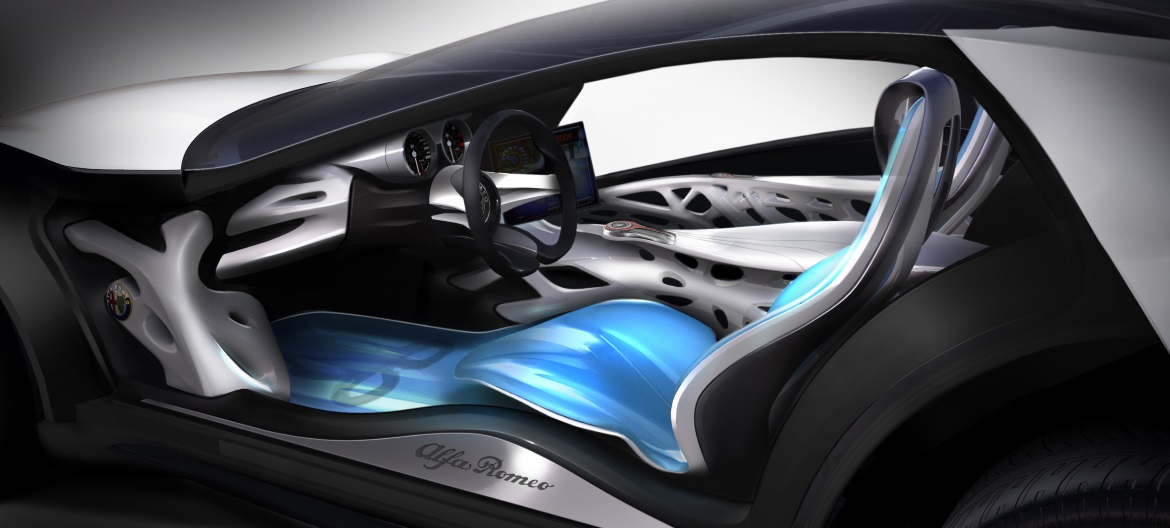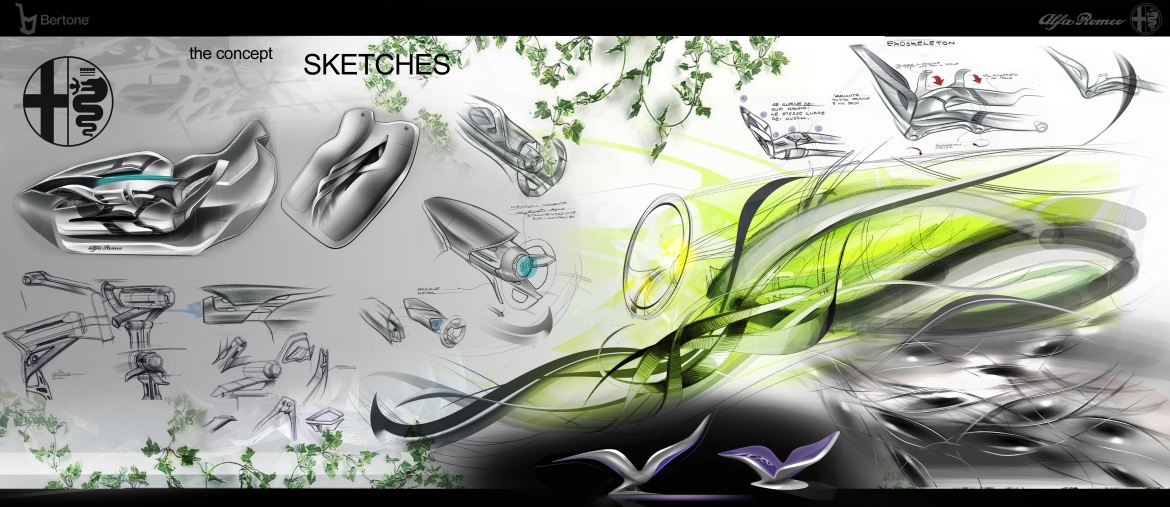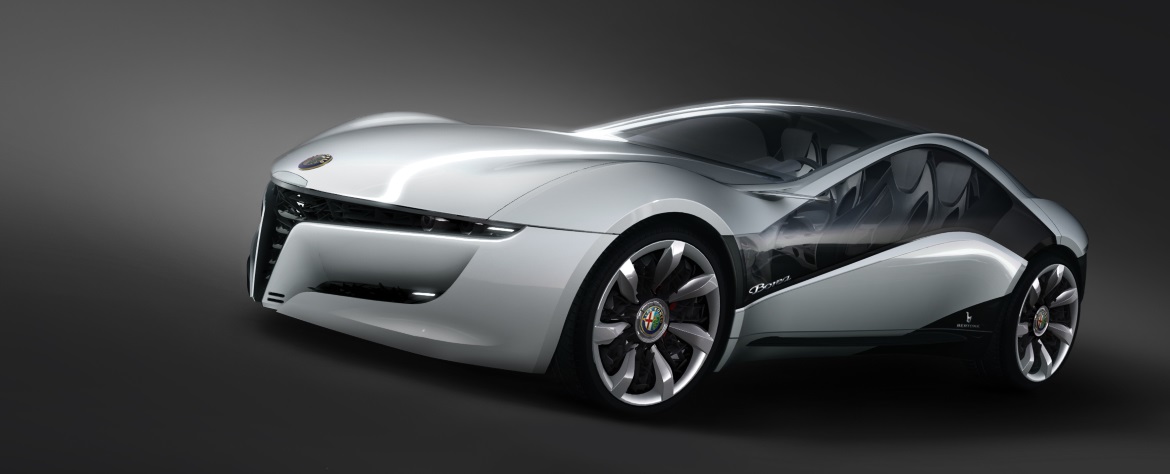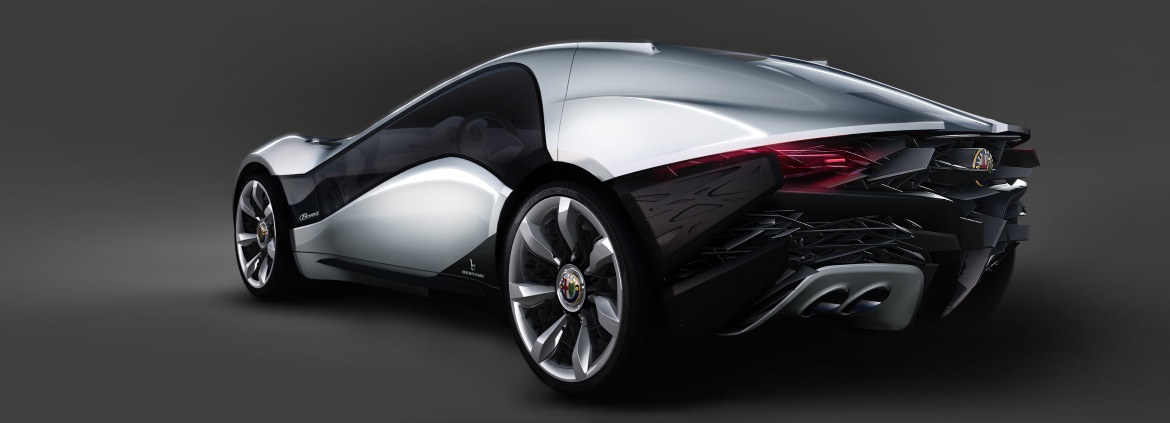IMMAGINATION AND GLAMOUR (Auto&Design n.181/2009)
In an automotive world characterized by bland aesthetic cautiousness, there are still those capable of visions that go beyond the commonplace. With its Pandion, a futuristic 2+2 coupé, Bertone surprises, fascinates and seduces with original, sinuous forms that pay homage to the centenary of Alfa Romeo. With a history dating back 75 years, the collaboration between Bertone and Alfa has spawned thirteen concepts and ten production models – from the astonishing B.A.T. concepts of the 1950s and the Gulietta SS, which was also built by the Turin coachbuilder, to prototypes such as the Carabo and the GT coupé, which is still in production today.
“The suggestion from Fiat that we should create a prototype to celebrate Alfa’s centenary was therefore received very enthusiastically”, says Mike Robinson, director of design for Bertone since last August, when Nuccio Bertone’s widow Lilli regained control over the company. “The first thing we did was to decide to avoid retro references and look decidedly forward”, continues Robinson. “It isn’t easy to make a good futuristic design. You need to draw the line between banality and taking it too far. Nuccio Bertone was a master in this: there are fascinating cars in our museum that still look fresh after forty years”. The mechanical basis for the project was a Maserati GranTurismo (the same that underlies the Alfa 8C Competizione), with its rear wheel drive platform and 444 bhp 4.2 litre engine and wheelbase reduced from 2942 to 2850 mm. “We accentuated the cab-aft architecture as much as possible. The body is tensed toward the rear like a taut catapult, ready to spring forward at full speed”.
All three were presented to Lorenzo Ramaciotti, vice president of style for the Fiat group, and Sergio Cravero, Alfa Romeo MD at the time. “We were very pleased that, even without knowing our preferences, they were positive about the proposal that was to become the Pandion”. The name is that of a fish eagle with a distinctive wide wingspan, which is particularly apt for the car, with its proud face and the spectacular choreography of the doors as they open. The front is devoid of shiny chrome or decorative addenda. The Alfa shield is clearly visible, even though it is merely hinted at by a gap in the surfaces, as are the typical “whiskers” of the chin air intakes. The front and tail are linked by sinuous flanks traversed by a daylight opening forming a continuous arc between the front and rear wheel arches. Even the act of getting into the car is cause for surprise, as there are no conventional doors, and the entire side of the car opens up instead. Hinged at the rear wheel arch, the side of the car opens up vertically to reach a height of over three and a half metres. “Bertone has always been famous for its special doors, such as the guillotine doors used on the Carabo. We deliberately looked for a visually spectacular solution”.
The Pandion also expresses this duality through an unusual treatment for some of the exterior and interior surfaces. The tail is an open structure consisting of four longitudinal fins encompass ing hundreds of tiny blades with a matte metal finish, which intersect with one another like a crystal and seem to break away and emanate from the car. “It is a kind of dematerialisation generated by the intrinsic motion of the shape, like the tail of a comet”, explains Robinson. Inside, however, the side panels and centre tunnel feature a soft, sinuous intertwining tex. The results are undoubtedly very attractive. Lifting the side panel of the Pandion reveals a flowing, cocooning ambience. “Nuccio Bertone was a great innovator, but he also knew how to avoid exaggeration and the absurd. He will always be our spiritual guide –when we do something, we always ask ourselves what he would have thought of it. I call it ‘walking in the footsteps of a giant’.”
















